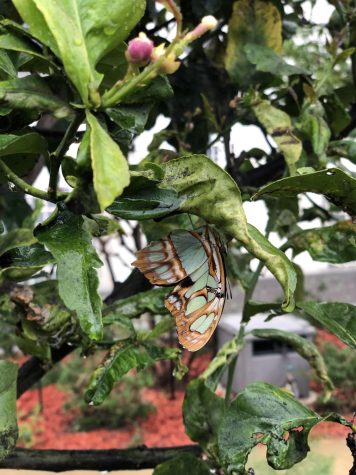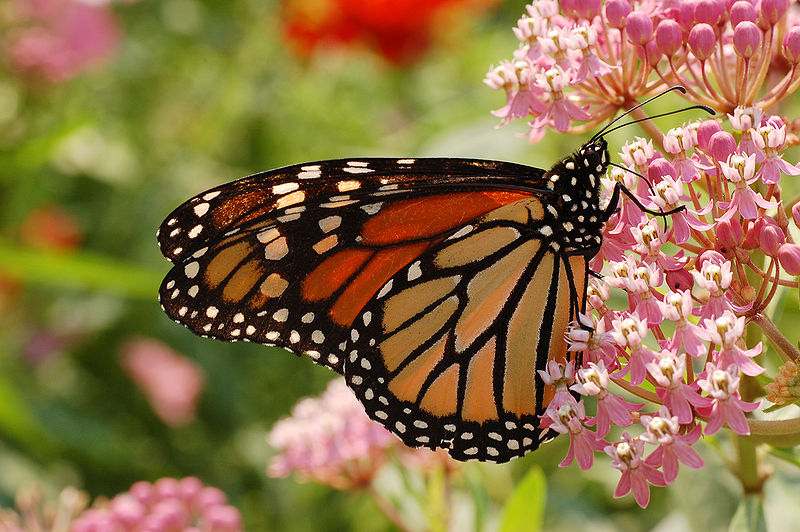Break out of the cocoon: Exploring the LA Natural History Museum
Witness the beauty and importance of butterflies to our ecosystem at this seasonal outdoor exhibit
Vibrant colors take flight at the Los Angeles Natural History Museum’s Butterfly Pavilion where an assortment of California native plants are showcased to the public, as well as around 30 butterfly and moth species.
This seasonal outdoor exhibit opened on March 5, and allows adults and children to witness nature up close and learn about the contribution of butterflies to the ecosystem, migration patterns and their life cycle.
Along the way, visitors will get to see butterfly eggs, caterpillars feeding on leaves and chrysalises, also known as a pupa, the stage where a metamorphic insect is enclosed in a cocoon or protective covering while undergoing internal changes to its larval structure. After maturing within the pupa, an adult butterfly expands its wings and takes flight to show onlooking guests a complete look at a life cycle of a butterfly.
Tony Turner, museum educator of the Butterfly Pavilion, explained why these insects are so important to our ecosystem.
“Butterflies are called wild indicators of an ecosystem because they provide a picture regarding the health of an ecosystem at any particular time,” Turner said. “Butterflies are responsible for increasing the biodiversity of an ecosystem and an environment that appeals and attracts butterflies would also be fertile for the growth of plants and serve as a suitable habitat for other animals.”

“Butterflies are also known as great pollinators, when they visit flowers to feed on nectar, they deposit pollen on other plants, causing fertilization to occur,” he said. “As pollinators, butterfly migration across the U.S. provides an invaluable service, essential for our ecosystem’s survival.”
Monarch butterflies, most well-known in North America, leave their summer breeding grounds in the fall and travel upwards of 3,000 miles from Northeastern U.S. and Canada to Southwestern Mexico.
“As the days get shorter and the temperatures drop, Monarchs begin to abandon breeding and feeding territories in search of a safe place to spend the winter,” Turner said. “After waiting out the winter, monarchs will head back north to warmer climates, such as; California or Texas, where they mate and lay eggs on milkweed plants.”
“The average lifespan of a migrating adult butterfly is between six to eight months, making the butterfly metamorphosis a quick process,” he continued. “From the time they are hatched to being an adult, is usually around 28 days. The most fascinating time in the life cycle is when the caterpillar begins to shed its skin and they hang themselves upside down for 18 hours, which is when body parts for breeding and flight become fully developed.”
“Once they form into a Pupa or Chrysalis, the vessel or cocoon will become rigid and firm, protecting it from predators or extreme weather conditions,” Turner said. “From Chrysalis to adulthood takes about 10 to 14 days and when the adult butterfly emerges, the wings will harden and pump a liquid throughout the wings, called hemolymph, making the wings bigger and stronger. Once ready, they take off in search of flowers and breeding partners, completing the cycle.”
The Los Angeles Natural History Museum is located at 900 Exposition Blvd., Los Angeles, CA 90007. For ticket pricing and entry times, visit https://nhm.org/ or call (213) 763-3466.


